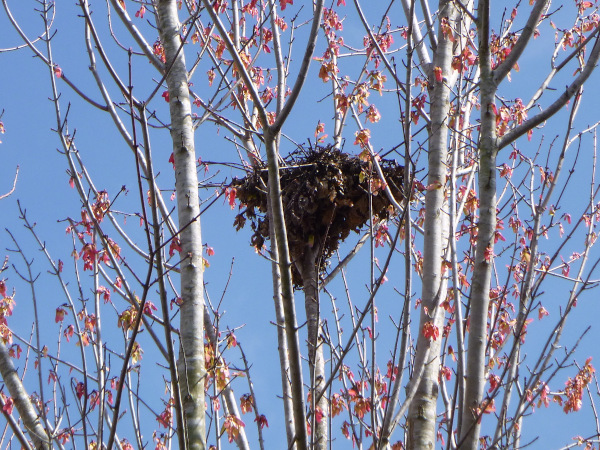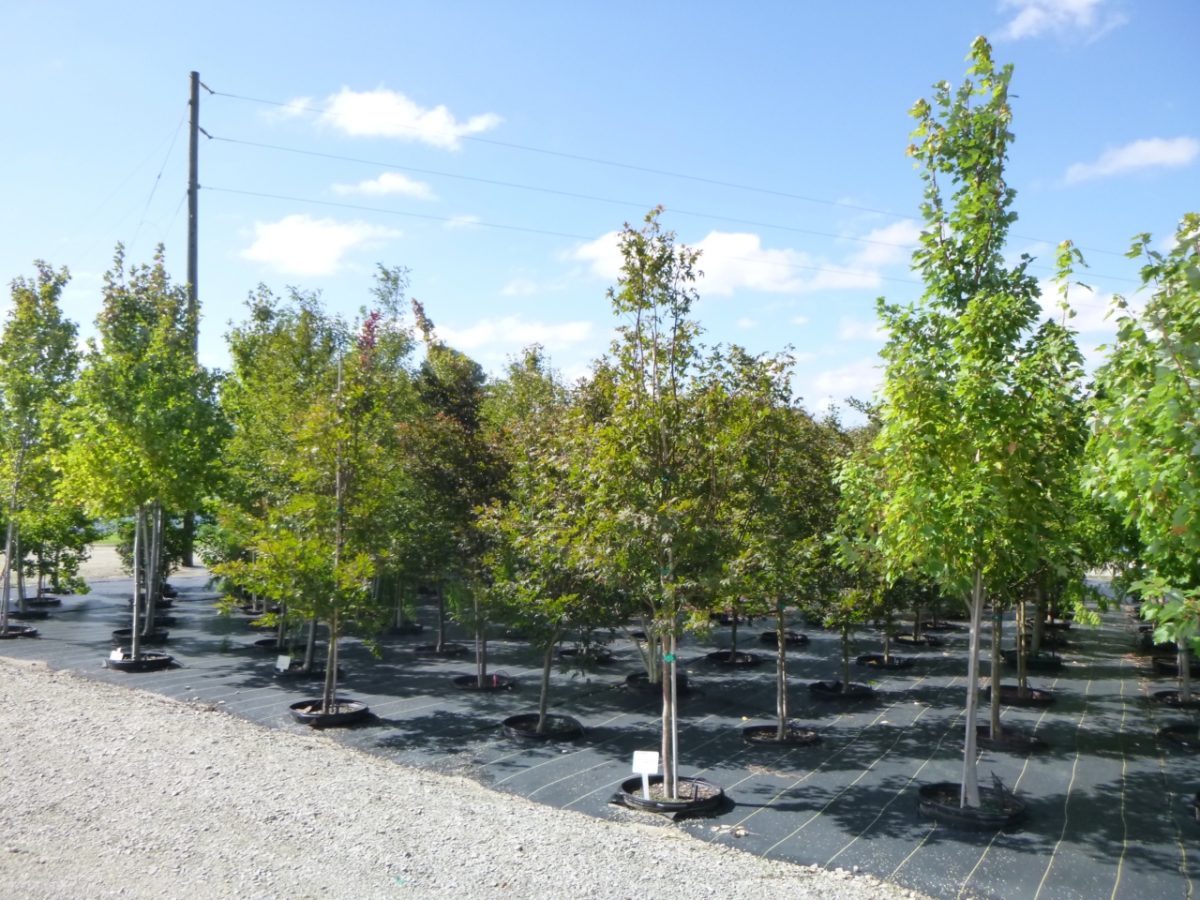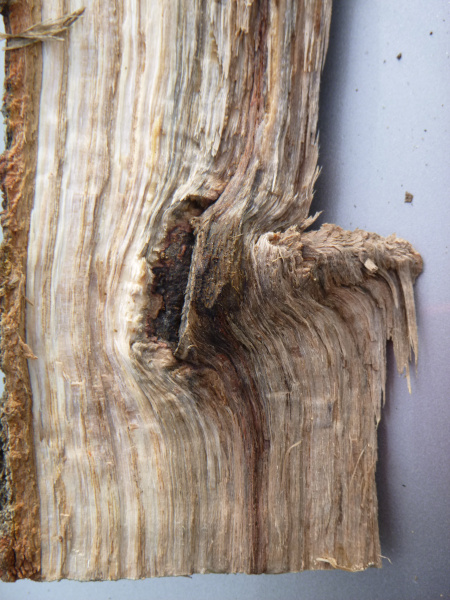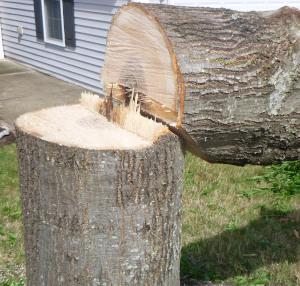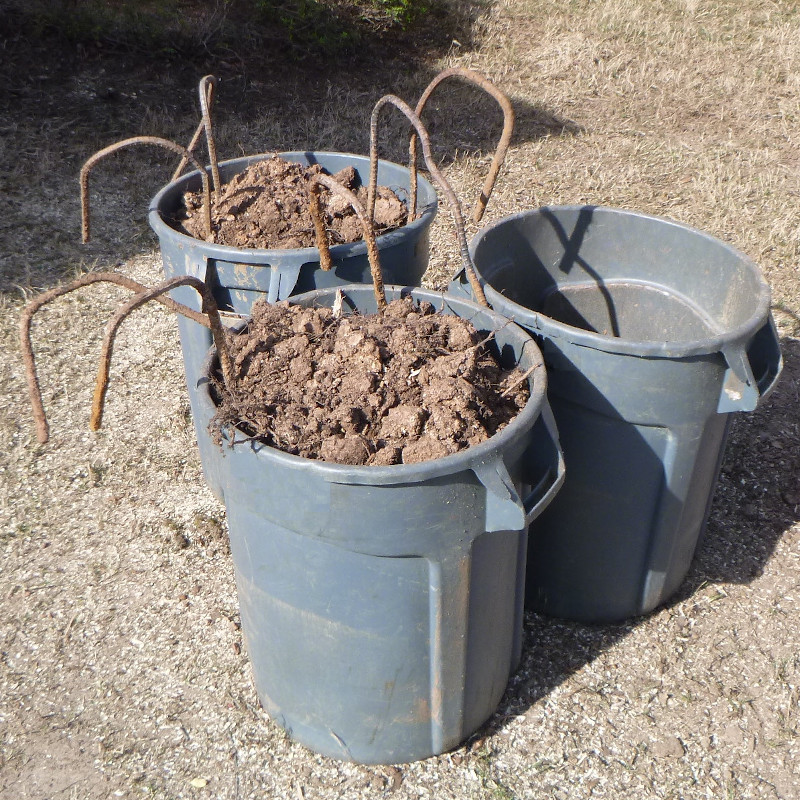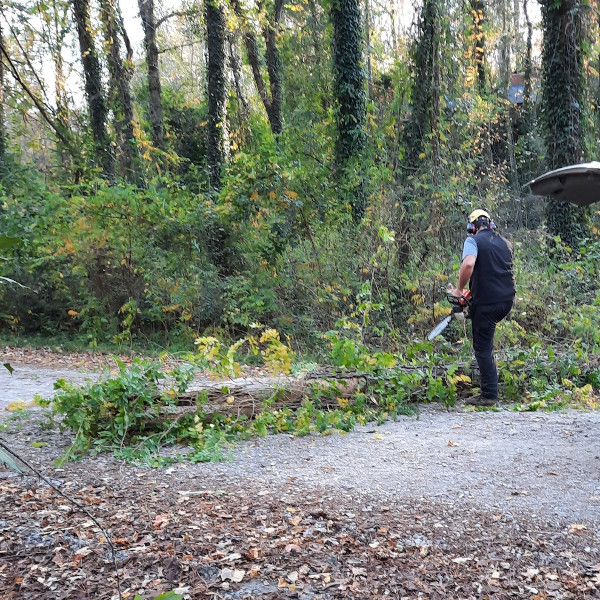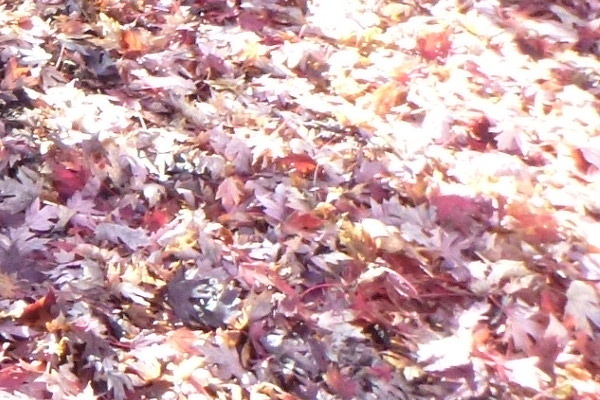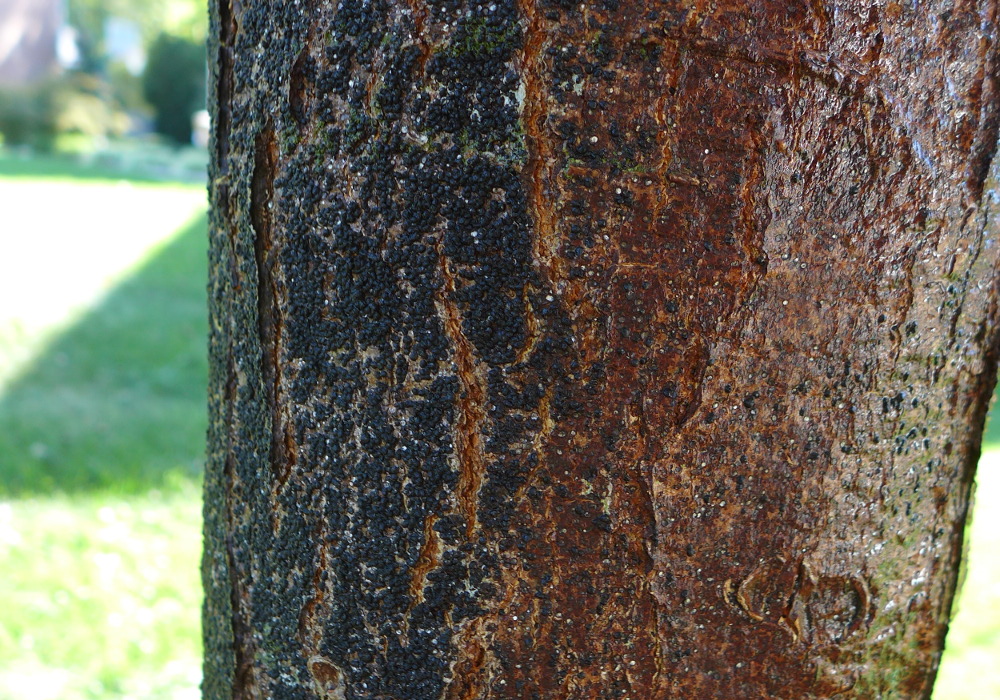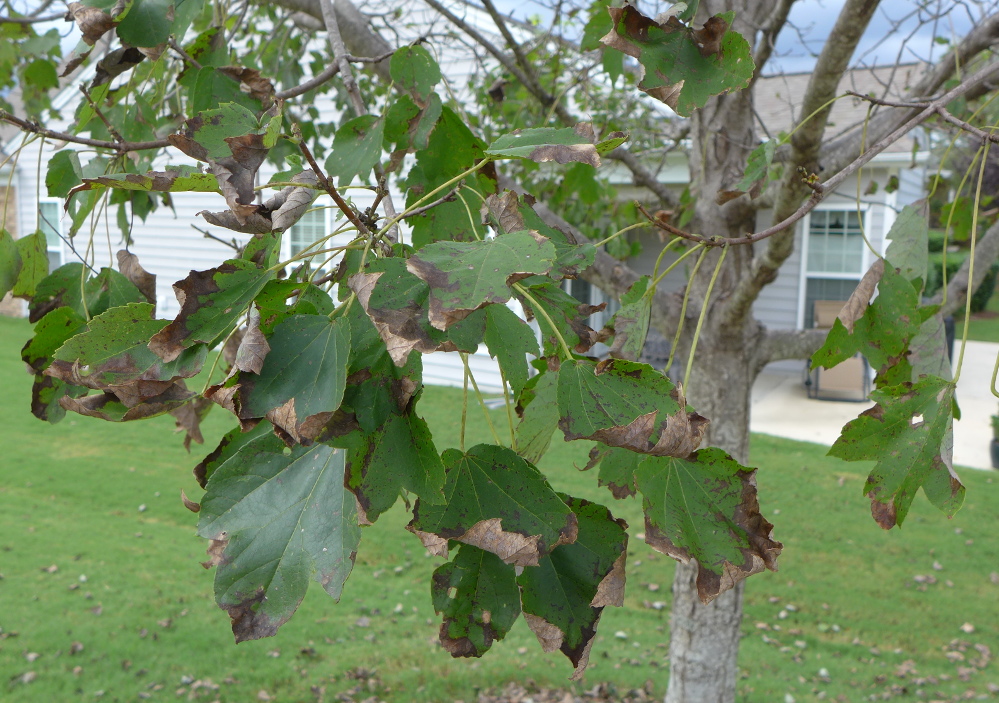Thank you to all my customers for this past year of work and looking forward to another year.
Stories
2024 And Spring Is Here
To my customers – thank you. I look forward to another year of planting, pruning, and the occasional removal.
Merry Christmas & Happy New Year
Merry Christmas and Happy New Year 2023. Thank you all for your patience in working with my schedule late last year.
(Image: A pruned branch on a oak tree shows up years later after the tree is removed in a cross section of the wood. Note the dark area up and down from the cut area as well as the seashell shape behind the branch showing the branch increasing in size each year)
Return In November
Due to the chance to finish a project this summer that I’ve been working towards for many years, I will not be scheduling any more work until November 2022.
If I have already talked with you about scheduling work or if I have you on my schedule, then that work will be completed by the end of June.
To my regular customers – I appreciate your patience and thank you for all the work you have given me in the past and I hope to be there for you again at the end of this year.
Training Upcoming
My schedule will be somewhat irregular to finish off this month due to upcoming training. I should be caught back up the first week of May.
(Photo) Builders planting trees in one area used steel rebar to stake in the new trees instead of wood stakes or no stakes. This created a dangerous situation for stump grinding a decade later when the wrong trees they planted have to be removed and the trees have started growing around the steel rebar.
Merry Christmas & Happy New Year
Thank you to all my customers for the work in 2021.
(Photo) Oak stump marked by 811 utility locating before grinding.
Merry Christmas & Happy New Year
Merry Christmas and a Happy New Year to all my customers. Thank you again for trusting me to remove, prune, plant and care for your trees.
Image: Just as I walked up to ring the door of one my last jobs of the year, a large dead pine tree fell across the street leading up to that customer’s driveway. It had been held up long past its due date with thick wisteria vines. I cut it up and, with a couple neighbors, moved it out of the road.
Merry Christmas & Happy New Year
Merry Christmas and a Happy New Year to all my customers. It was another year of hard work for excellent customers and it has been my satisfaction to drive past trees that I’ve planted on more and more roads.
Tree Pest Control Services
I currently offer spraying of small trees for two common problems in the area – Fungicide spraying for Cherry Leaf Spot and Horticultural Oil spraying for Maple Gloomy Scale – both are offered timed for best effectiveness, usually late February through early April depending on the variety of tree and weather for the year.
Cherry Leaf Spot is a problem most people notice when they see that their ornamental Cherry trees have completely lost their foliage by mid-to-late summer. With a few fallen leaves on hand, the problem can be diagnosed before planning treatment. It’s critical that spraying alone is not used for Cherry Leaf Spot, but that all fallen leaves are removed from the site each year as the fungus overwinters on the leaf litter. The fungicide I use prevents infection – it doesn’t kill the fungus. So timing is critical, but long-term resistance issues are considerably reduced.
Maple Gloomy Scale is a problem most people notice when they see that their Maple isn’t putting out leaves like it used to or that the tree’s bark has turned nearly black from the normal gray. The scale can be smothered fairly effectively with a Horticultural Oil as the scales release the next generation in late winter or early spring. Maple trees do best in a cooler, moist environment while Gloomy Scale reproduces rapidly in the hot environments where Maples are commonly planted now – street side, next to driveways and sidewalks, and in parking lots. Supplemental watering and removal of hard surfaces goes a long way to controlling this problem.
I do not currently offer any additional chemical pest control services and do not plan to offer anything requiring the use of restricted-use (RU) chemicals or tree injections.
Thank You
To everyone that hired my services this past year – thank you. The next couple months will bring pruning and removals and a chance to see people again. Before Christmas, I spoke with a farmer who talked about the wet weather making it difficult for several of his crops. I saw some of that in the world of trees in 2018: sites that couldn’t be worked on for stretches because the lawns wouldn’t take even foot traffic, and a surprise of Anthracnose in Maple trees in late August/September due to the many damp and cloudy days. Sometimes it takes a little extra time or a little extra research, but problems can be solved.
If you have a tree problem, please contact me.
Maple On A Roof in Raleigh
A customer that I had worked for previously called me to come see if I could remove a large Maple tree that had fallen onto his roof during a recent snowstorm. The snow turned out to just be the last straw, as the trunk near the base was quite decayed and the tree had already developed a lean searching for sunlight over the driveway.

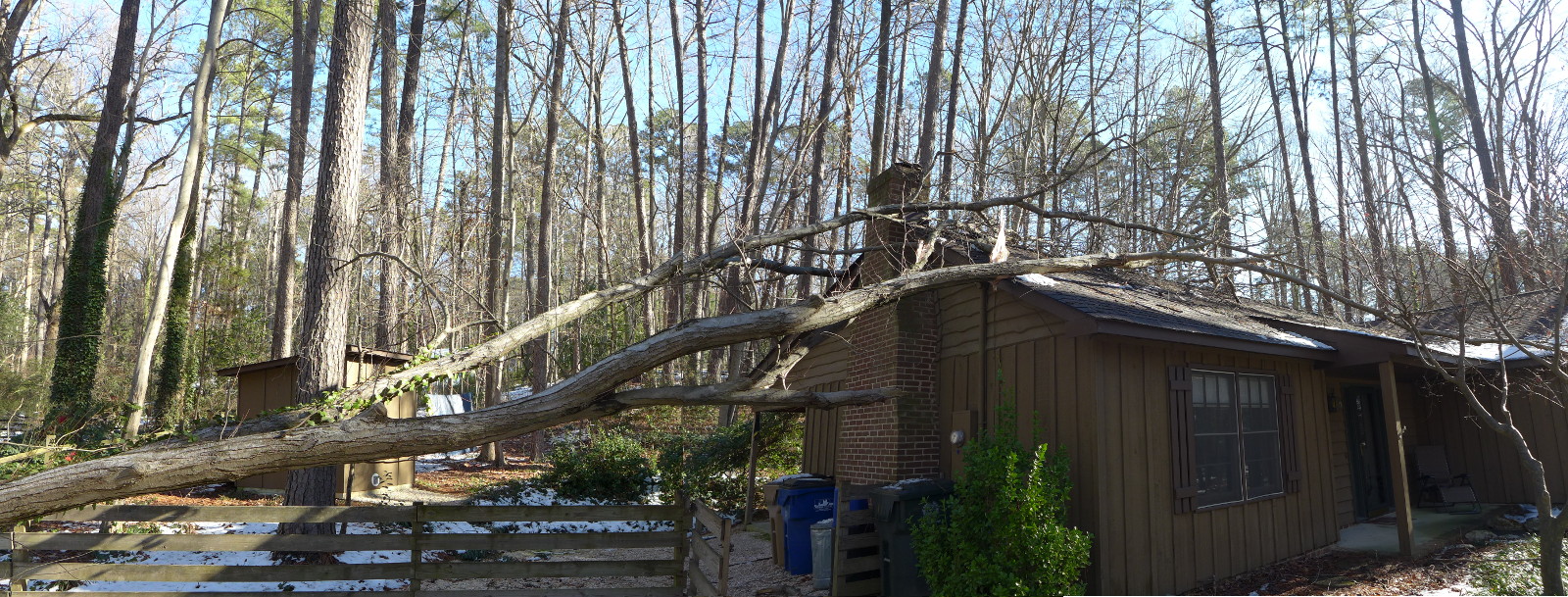
A number of factors allowed me to do this job. His home has a roof pitch of 3:12 in the back and 4:12 in the front and the drop off to the ground if just a few feet into soft ground on the rear and not much more in the front. The tree was also supported on the edge of the roof at a few points, so all the branches on the roof could be cleared off before removing the tree from the roof. There was still some snow on the roof when I started, so I brought a broom up with me to clear out a walkway ahead wherever I cleared branches.
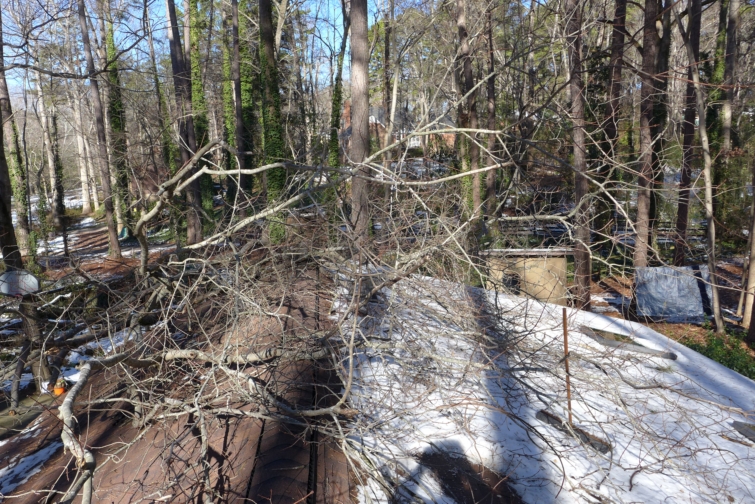
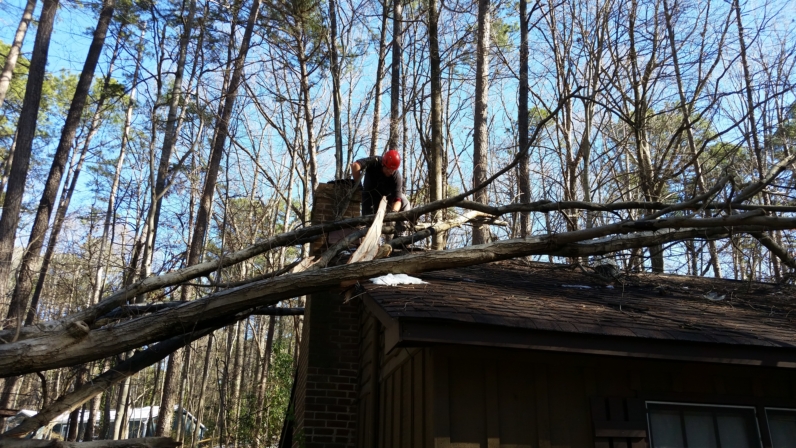
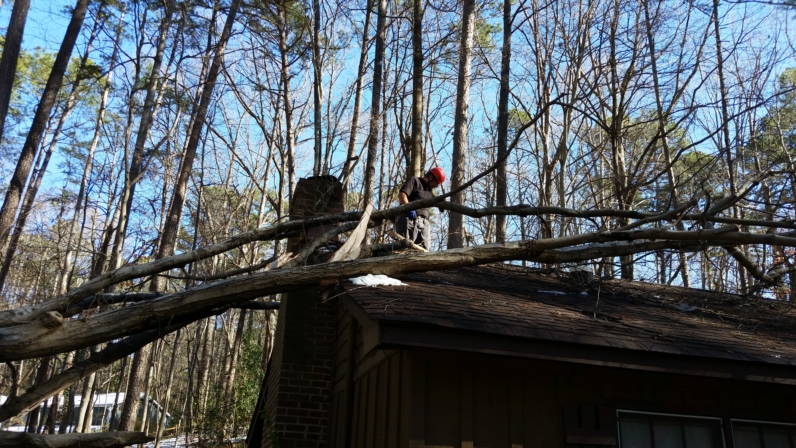
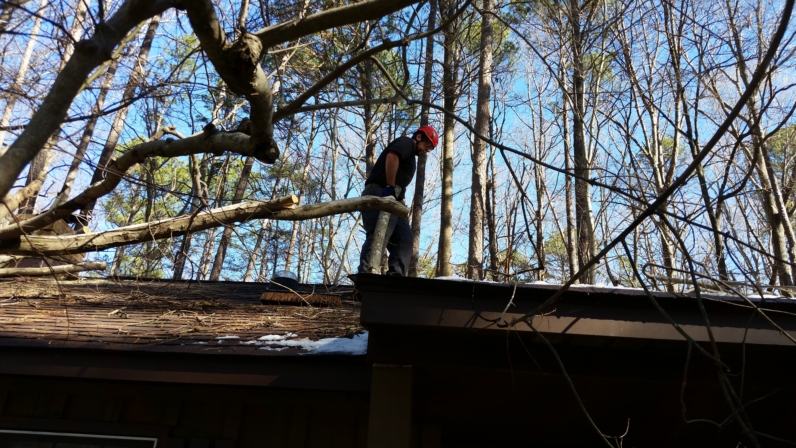
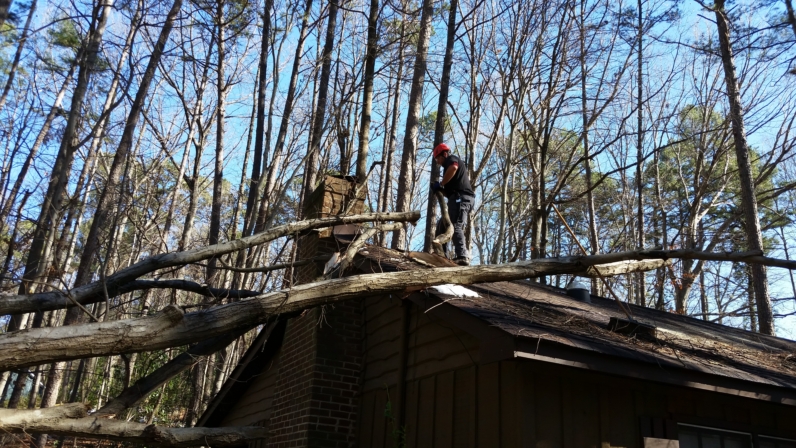
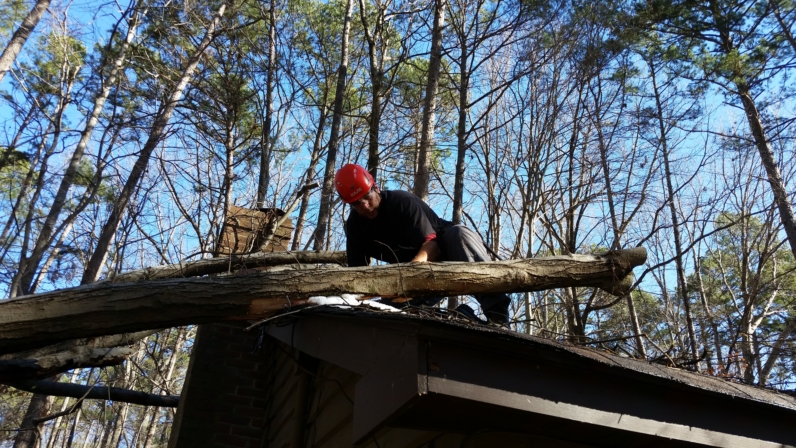
The tree was secured with a rope to prevent it from sliding off the front of the roof. Sliding like this could have caused more damage to the roof and smaller branches could clip parts of the building under the roof line. A second rope was placed to take a little of the weight off the roof, but the acute angle minimized the help.
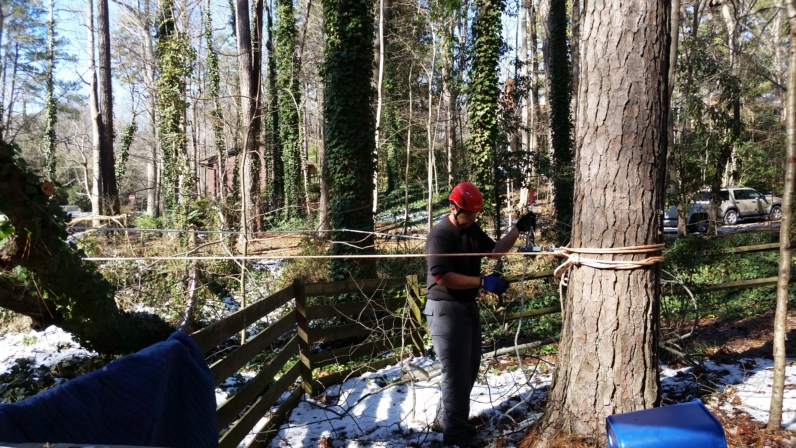
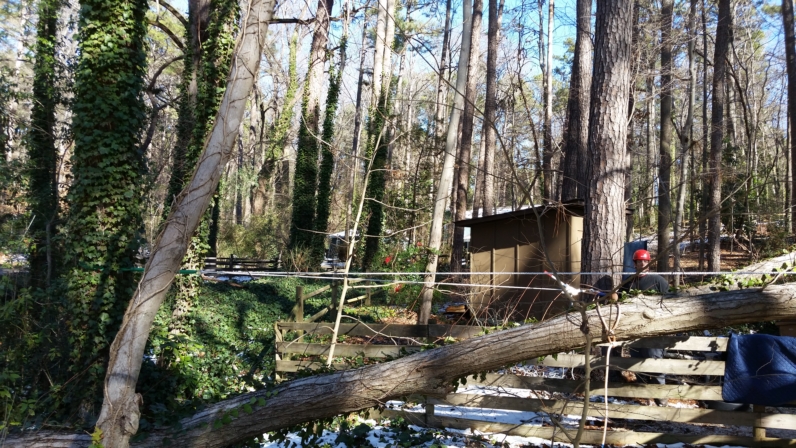
Once all the branches had been reduced to their contact points on the edge of the roof, the work started from the ground. The pressure was taken off to leave the main branch on the roof at last, getting down everything else to prevent damage to the fence. The main trunk had a second trunk of some size. I cut it off near the base of the tree and then cut off sections from that end, working the limb down in size. Eventually, I was able to carry off the branch from the roof.
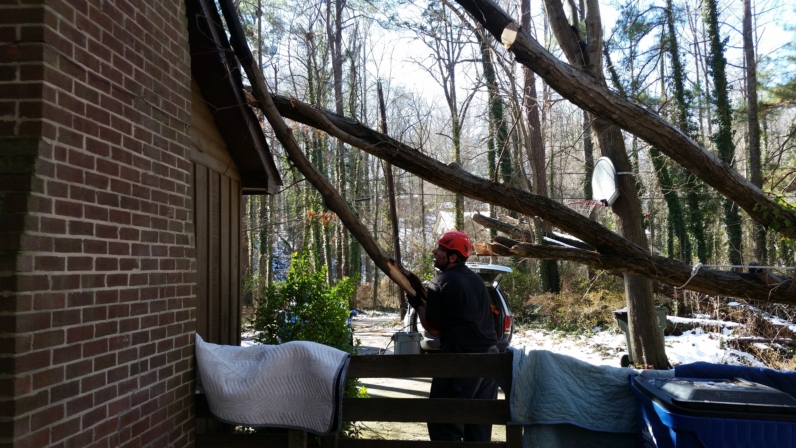
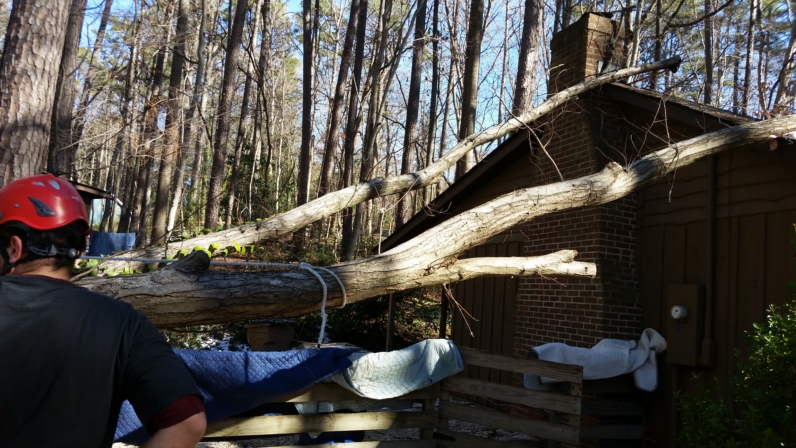
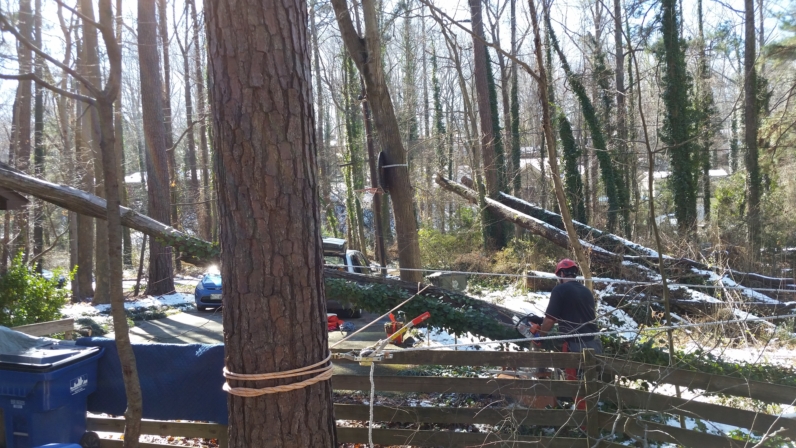
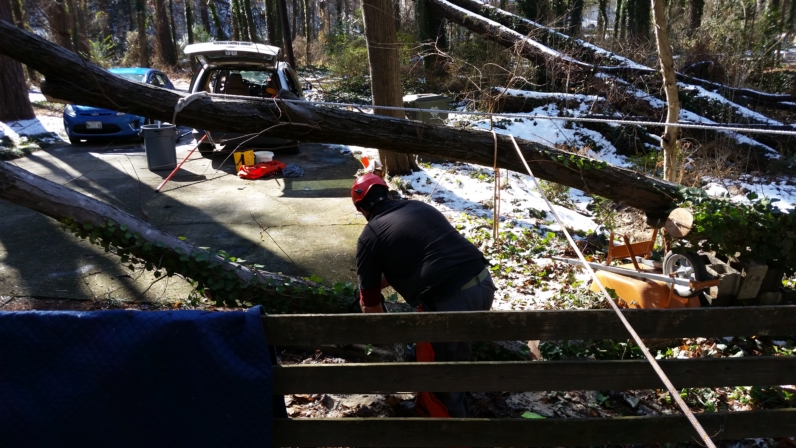
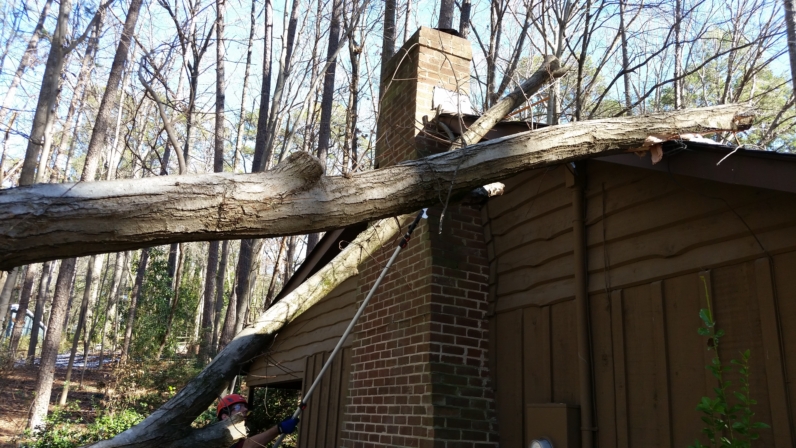
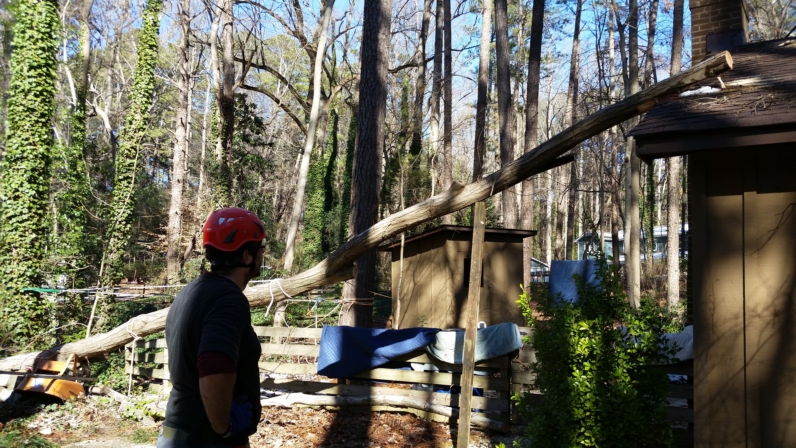
To get enough weight off the final piece, a 4×4 was hammered in place, the end cut most of the way through by the roof, the trunk cut most of the way through closer to the stump end like the previous limb, and then the end on the roof was cut off and the piece resting on the 4×4 pulled forward.
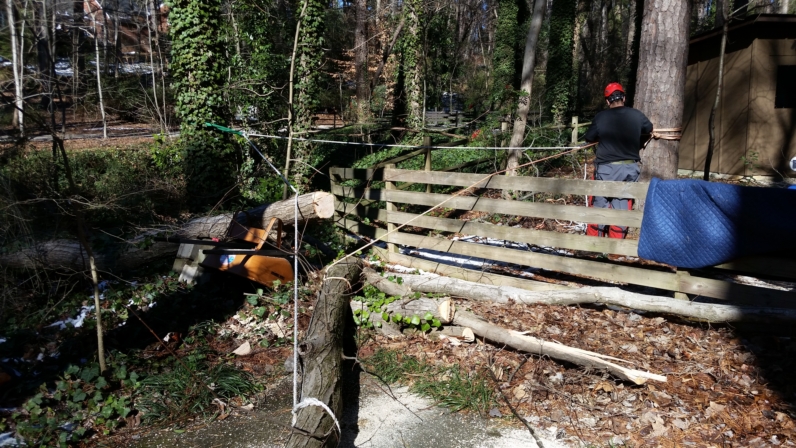
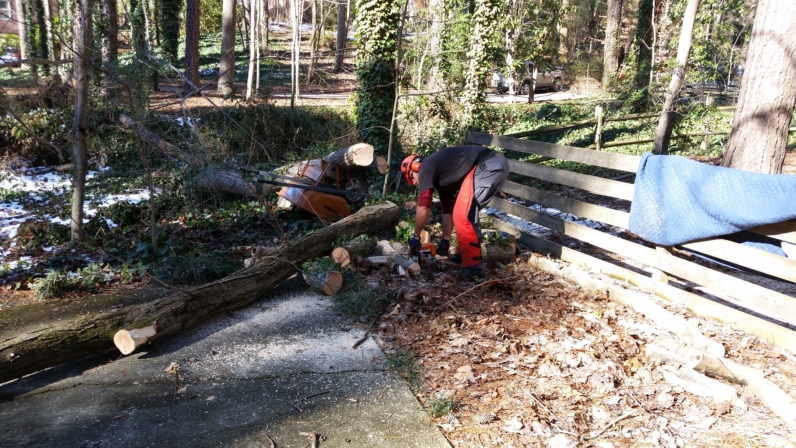

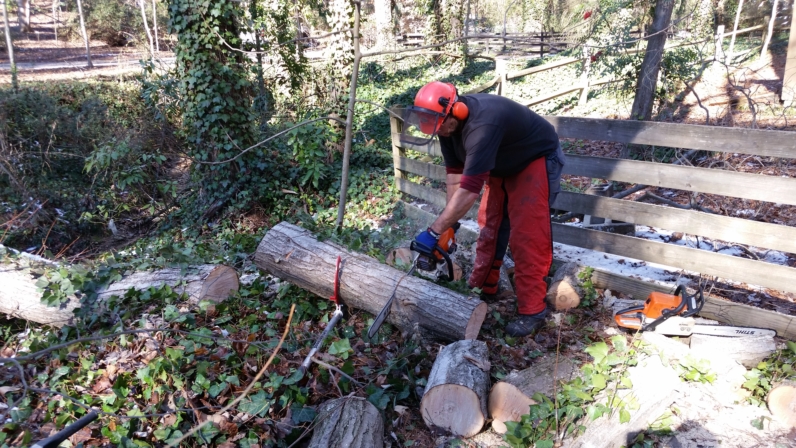
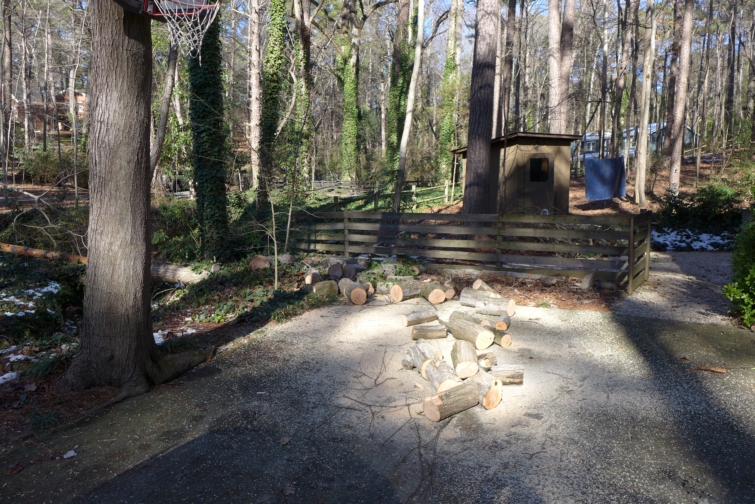
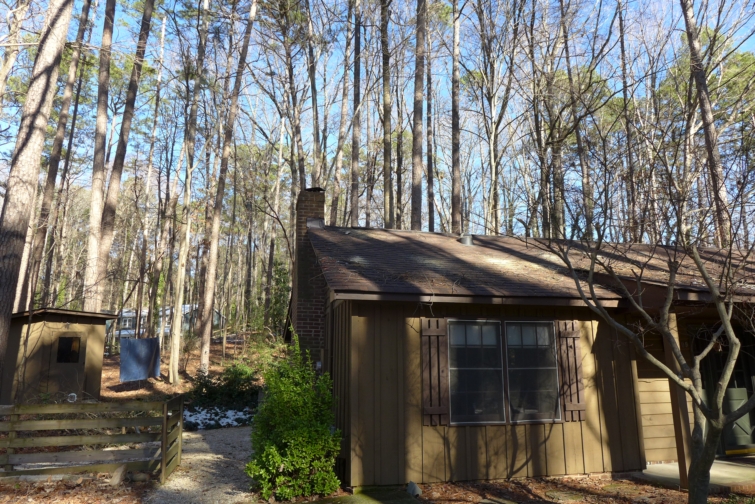
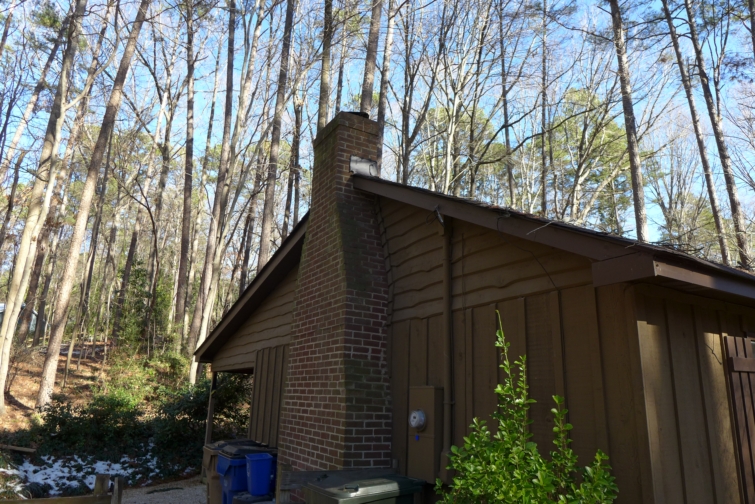
The customer requested the wood be bucked so he could split it and burn it, so that was the last part. Once finished, he graciously offered to blow off the roof and driveway for me so I was able to clean up my equipment and go.
Evaluating Your Trees
I recommend tree removal where there is (or will be) a poor match between the tree and the site it is growing on. What is a poor match? First, consider your land, all the structures on it, and what you desire from your land. Do you want a wooded lot? A large lawn? A vegetable garden? Are the trees you have part of enhancing or protecting those structures and implementing your vision for your land or will they interfere with it? If they interfere, you have a poor match. Do something now to take advantage of Just Small Trees, LLC services, not in 5 or 10 years when the problems are much more expensive to fix.
Remember, well-matched trees increase your enjoyment of your property and your property’s value, while poorly-matched trees do the opposite.
First Glance at Your Trees
Take a walk around your home and property. For trees near your house, look at each tree individually and consider the potential problems below. If you have a large number of trees elsewhere on your property, you can look at them in groups to save time.
Poor Site Problems
- Poorly Located (Damaging): The tree threatens or will threaten structures such as a foundation, patio, or deck due to root flare and trunk growth.
- Poorly Located (Annoying): The tree produces messy fruit, flowers, or leaves that are problem in the current location. Examples are gumballs from sweet gum (Liquidambar styraciflua) in a lawn or fruit from red mulberry (Morus rubra) staining a deck.
- Site Use Interference: The tree shades or will shade a lawn, garden, or other plants. Roots of such a tree will also reduce water available to other plants.
- Construction: The tree’s roots have been destroyed due to soil grading or extensive digging.
Poor Tree Problems
- Diseased or Damaged: The tree is diseased or damaged now and not worth saving or can’t be saved.
- Ugly: Some trees you just don’t like. Remove them now, get relief, and save money in the long run.
- Poor Adaptability: I often cut down black cherry (Prunus serotina) trees from the Wake County area. Why? Despite being a good tree in the NC mountains, this tree grows poorly in the local heat and humidity. Add in eastern tent caterpillars during the summer and you end up with a tree having bad foliage, bad form, and numerous health issues.
- Potential Breakage: Bradford pear (Pyrus calleryana) has ugly, poor branch structure that is prone to ripping the trunk when branches break due to wind or ice. Why wait? Cut it down and replace it with something better.
Removal vs Pruning
If you have a good tree species but the site match is just so-so, pruning is a good option. The most important thing with pruning is to start early in the tree’s life. It is impossible to turn a large, healthy, mature tree into a small, healthy, mature tree. Attempt to do so and you will get a tree that will decline and die over the next several years.
Pruning a good tree is worthwhile. For example, my parents have a large willow oak (Quercus phellos) about 20 feet from their house. At close to 70 feet tall and with a trunk diameter of 3 feet it requires pruning every several years to get branches off the house and roof. Regular pruning, starting years ago, is the only reason this beautiful specimen has been able to safely coexist with their house.
Overall, I don’t recommend pruning to make a tree stay smaller unless you are prepared to invest in yearly pruning of the tree for the entire life of the tree. An example would be an apple tree grown for fruit, a more extreme example a bonsai tree. If you don’t want to prune so often, remove the tree when it’s small and put something better in it’s place.

